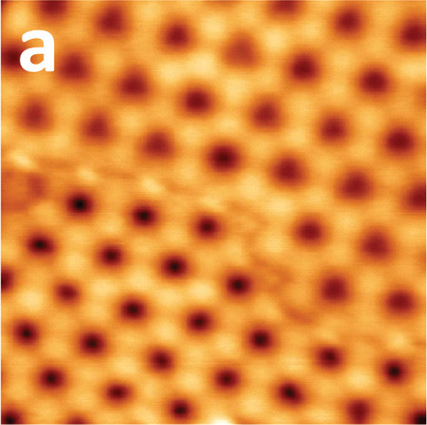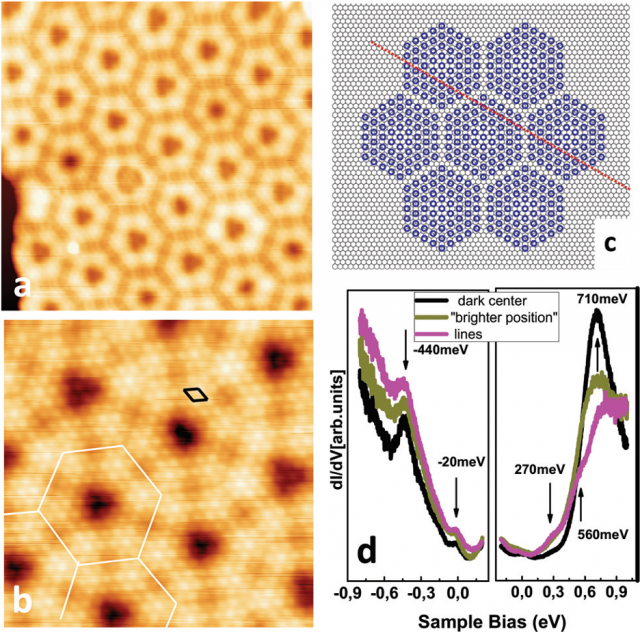Strains control electronic properties and magnetic ordering in an atomically-thin layer
Geometrical structure, lattice periodicity and atomic arrangement are subtly intertwined with the electronic properties of materials. Sub-angstrom changes in the atomic distance are sufficient to modify the physical and chemical properties, such as the band-structure, carrier mobility and the chemical reactivity. The deposition of two-dimensional layered crystals on mechanically stretchable or bendable substrates can produce one-dimensional strained structures with intriguing properties. On the other hand, in mesoscopic systems formed by few-layers thick ferromagnetic materials, structure relaxation processes lead to interesting effects in the electronic and magnetic properties
This suggests strain as a good method to manipulate the electronic properties, and consequently the magnetic order, also of thin layers of strong magnetic materials. Nonetheless, a general picture on the influence of atomistic structure on the local magnetic order is still missing.
In order to tackle this problem monolayers of rare-earth based materials seem particularly suitable, because the exchange interaction process and, consequently, the magnetic order are critically sensible to structural variations and orbital hybridizations Thus, to investigate the relation between the structural, electronic and magnetic properties alloys with orbitals 5d, 6s nearly-free conduction and highly localized 4f electrons interplay are the perfect candidates.
Now, a team of researchers that includes Alexander Correa, from CSIC-UPV/EHU and DIPC, coordinated by Ikerbasque research professor Lucia Vitali, has characterized 1 a monolayer structure based on rare-earth surface stoichiometric alloy GdAg2 forming a weakly interacting moiré superstructure on Ag(111). They publish their findings in Nanoscale.
A monolayer of GdAg2 forms an incommensurate structure on Ag(111). Incommensurate meaning that, though the lattice has a long-range periodic order, it also has two or more periodicities in which an irrational number gives the ratio between them. This free standing alloy is then progressively strained to survey the impact on the band structure.

This results in topographic scanning tunneling microscope images (Figure 1) as a moiré (two sets of line grids slightly inclined to one another) superstructure, whose apparent minima and maxima reflect the variation of the geometrical registry of the atoms of the alloy layer with respect to the Ag(111) surface.
The researchers use first-principles calculations to show that the formation of the superstructure induces different relaxations of the supporting substrate according to the stacking registry of the alloy layer. They find that the clearly distinct relaxation of the system in top stacking has a critical role in the electronic properties and in the local spin order of the alloy.

Then the scientists compared the structural and local spectroscopic measurements, obtained with a low temperature scanning tunneling microscope operated at 77 K, with the theoretical prediction to survey two major electronic contributions in the occupied and empty band structure of the GdAg2 monolayer grown on Ag(111) as a function of in-plane lattice strain.
They found that this leads to surface electronic hetero-structuring. Furthermore, out-of-plane structural relaxation and buckling of the atomic structure resulted in a variation of the interlayer distance, texturing the electronic and magnetic properties of the GdAg2 monolayer with the periodicity of the moiré superstructure.
Correa at al. believe that the intimate relation found between structural, electronic and magnetic properties have a general validity in weakly interacting layered systems, most of which form moiré superstructures.
Author: César Tomé López is a science writer and the editor of Mapping Ignorance
References
- A. Correa, B. Xu, M. J. Verstraeted, and L. Vitali (2016) Strain-induced effects in the electronic and spin properties of a monolayer of ferromagnetic GdAg2 Nanoscale doi: 10.1039/c6nr06398e ↩